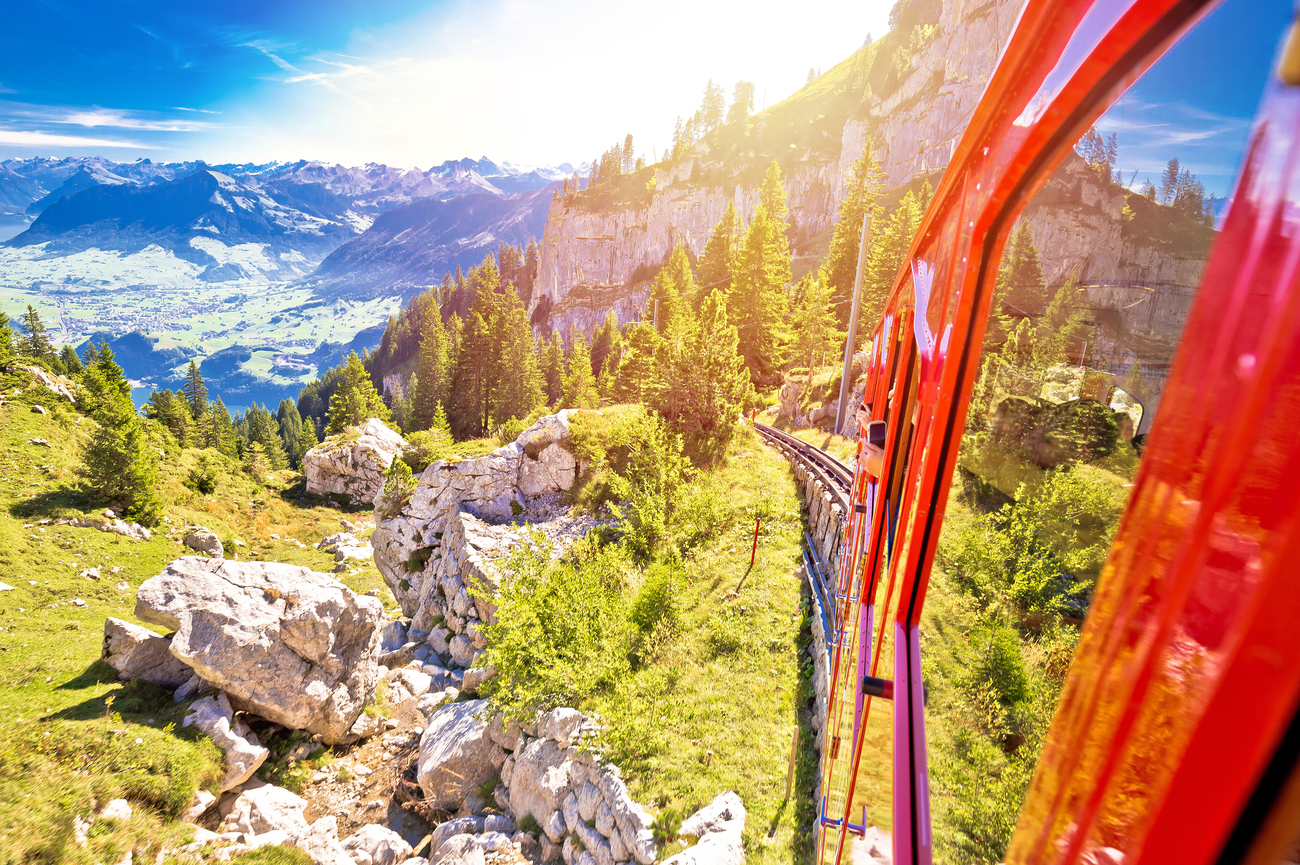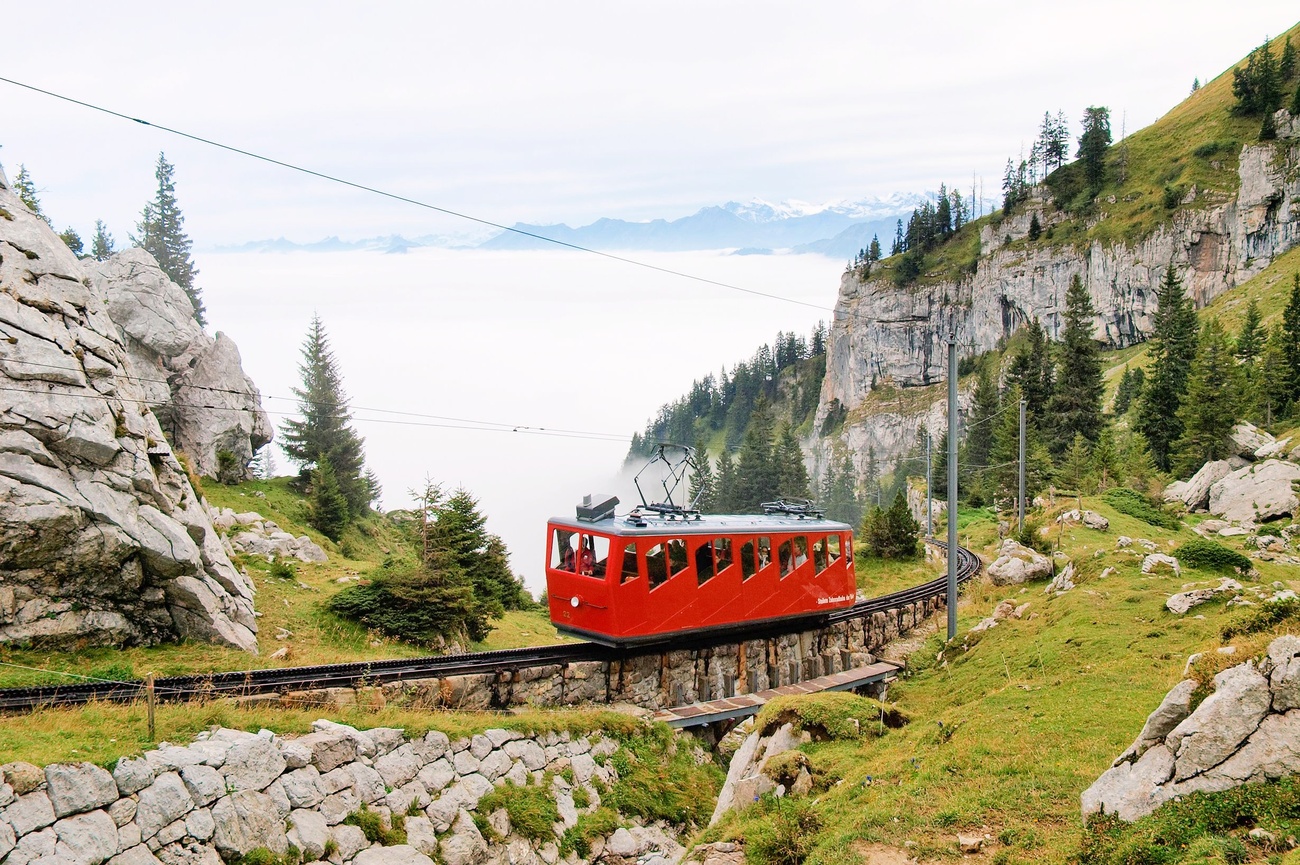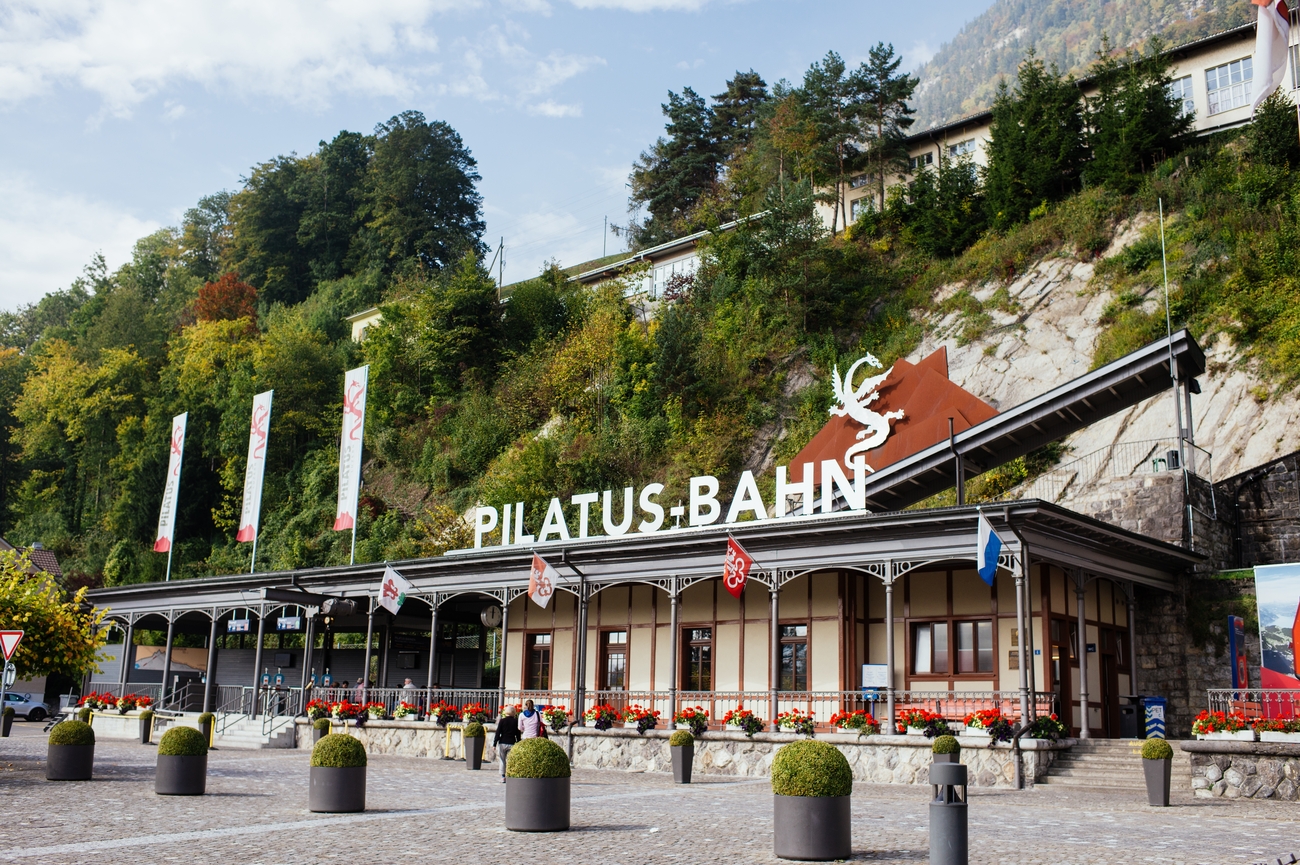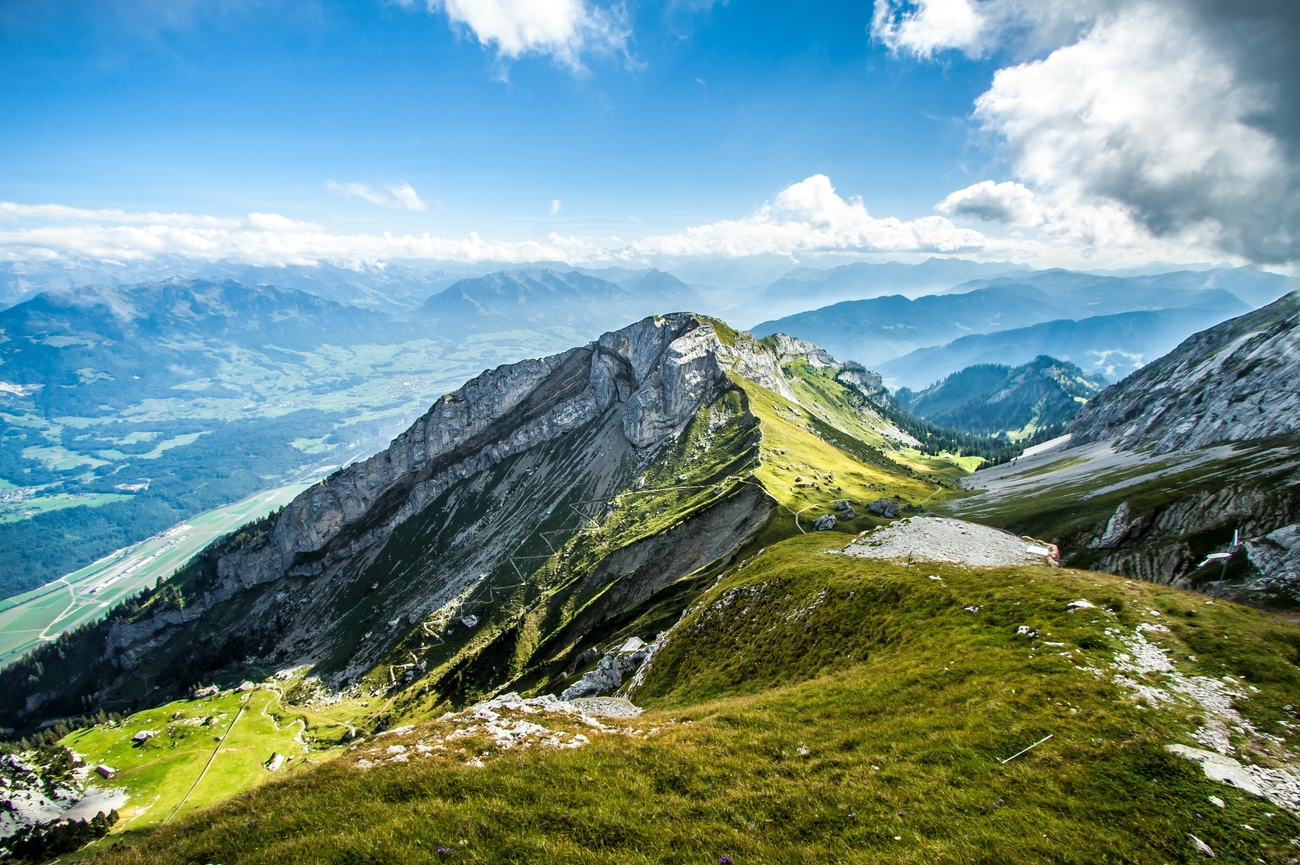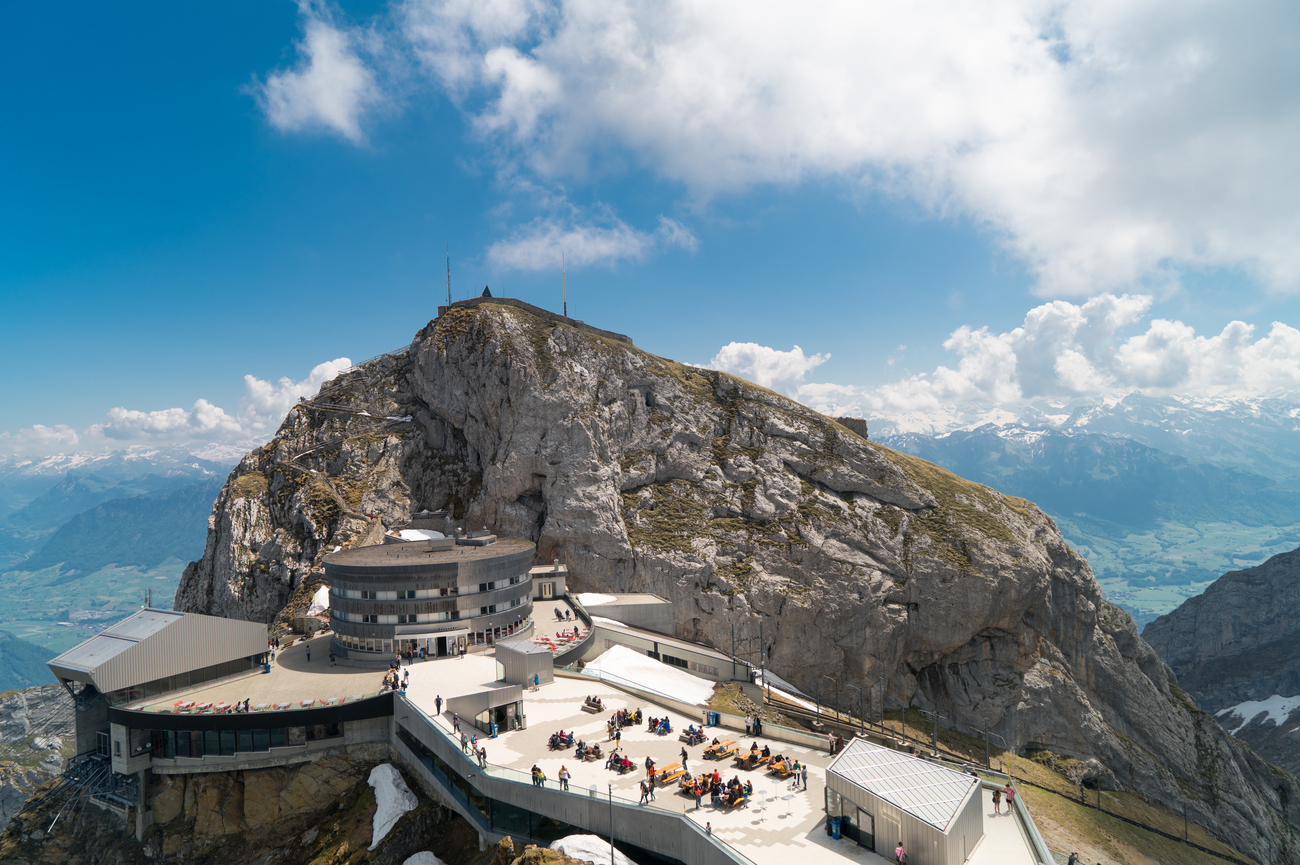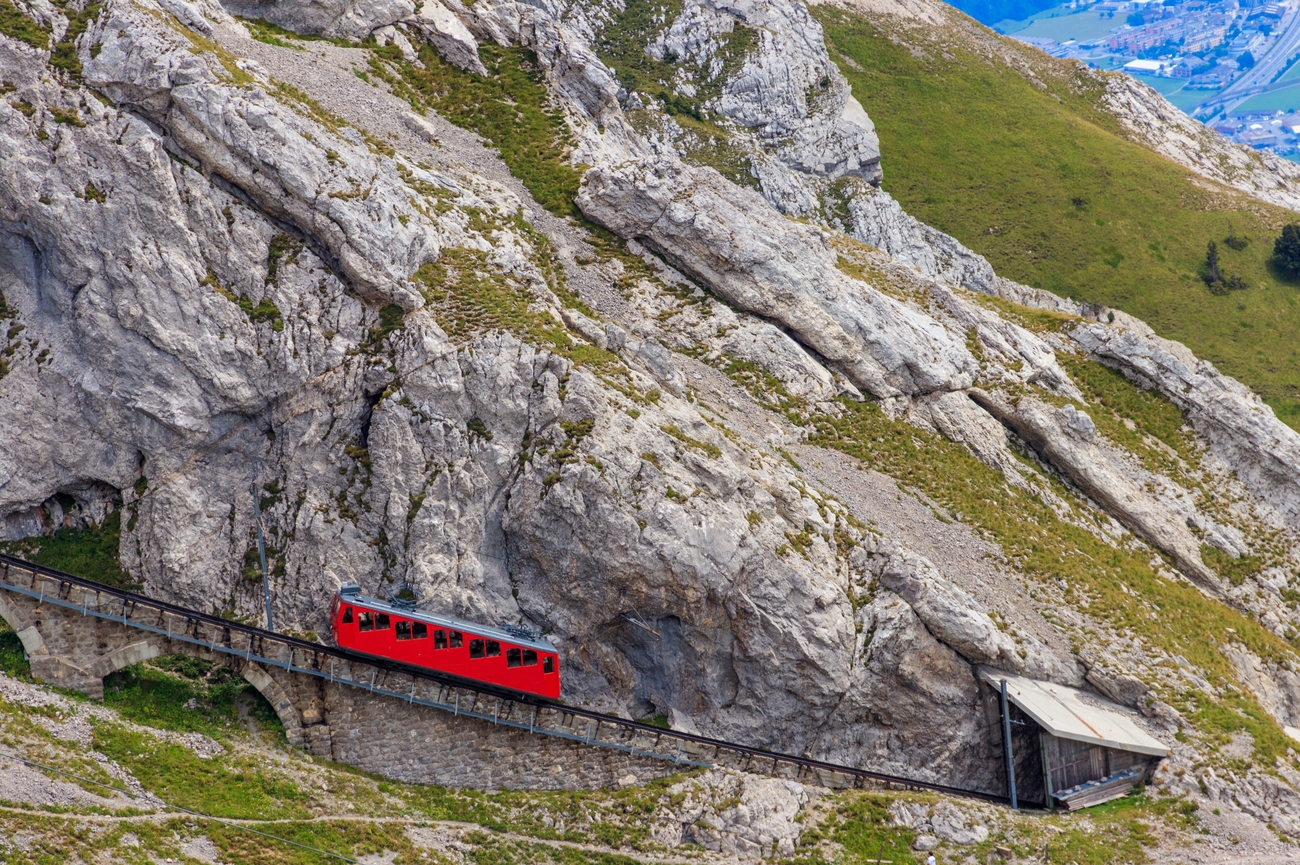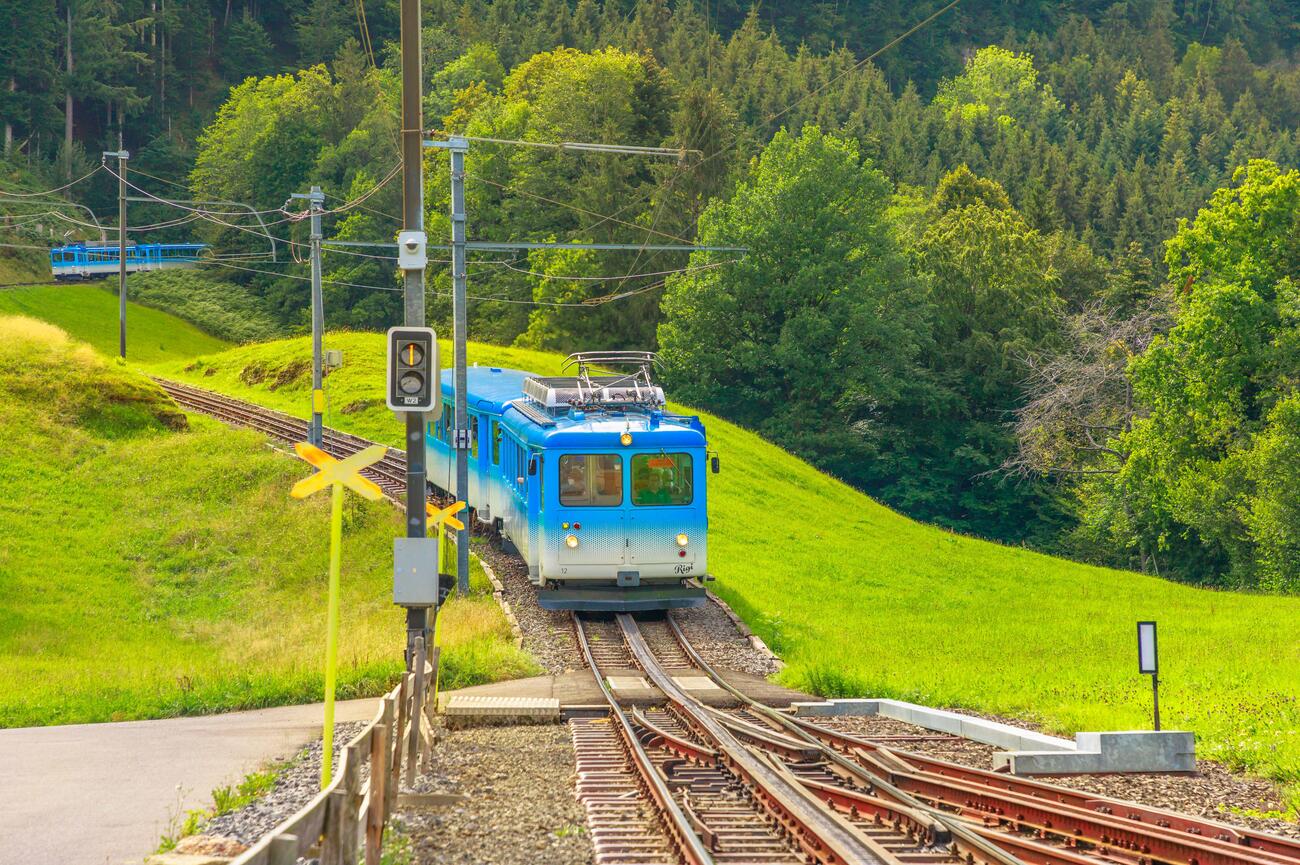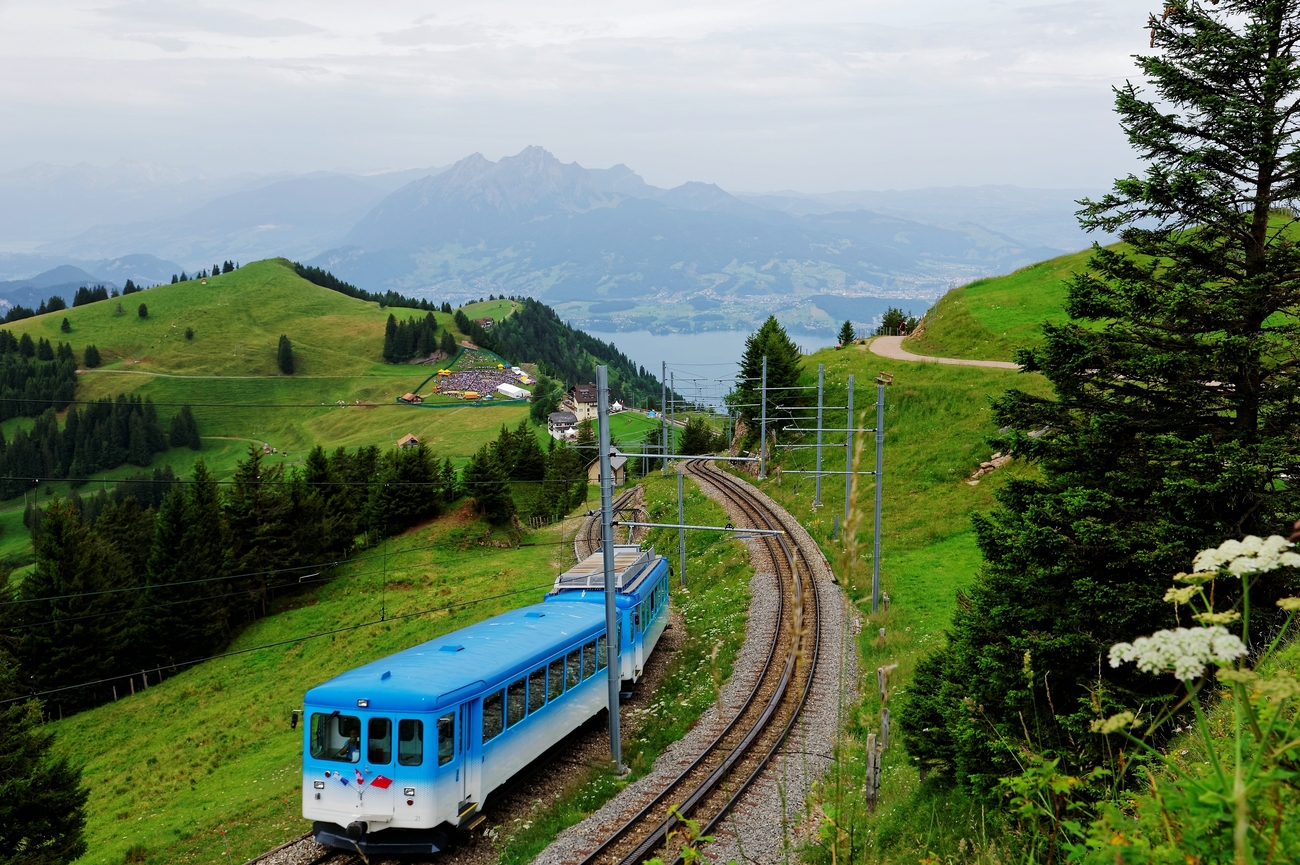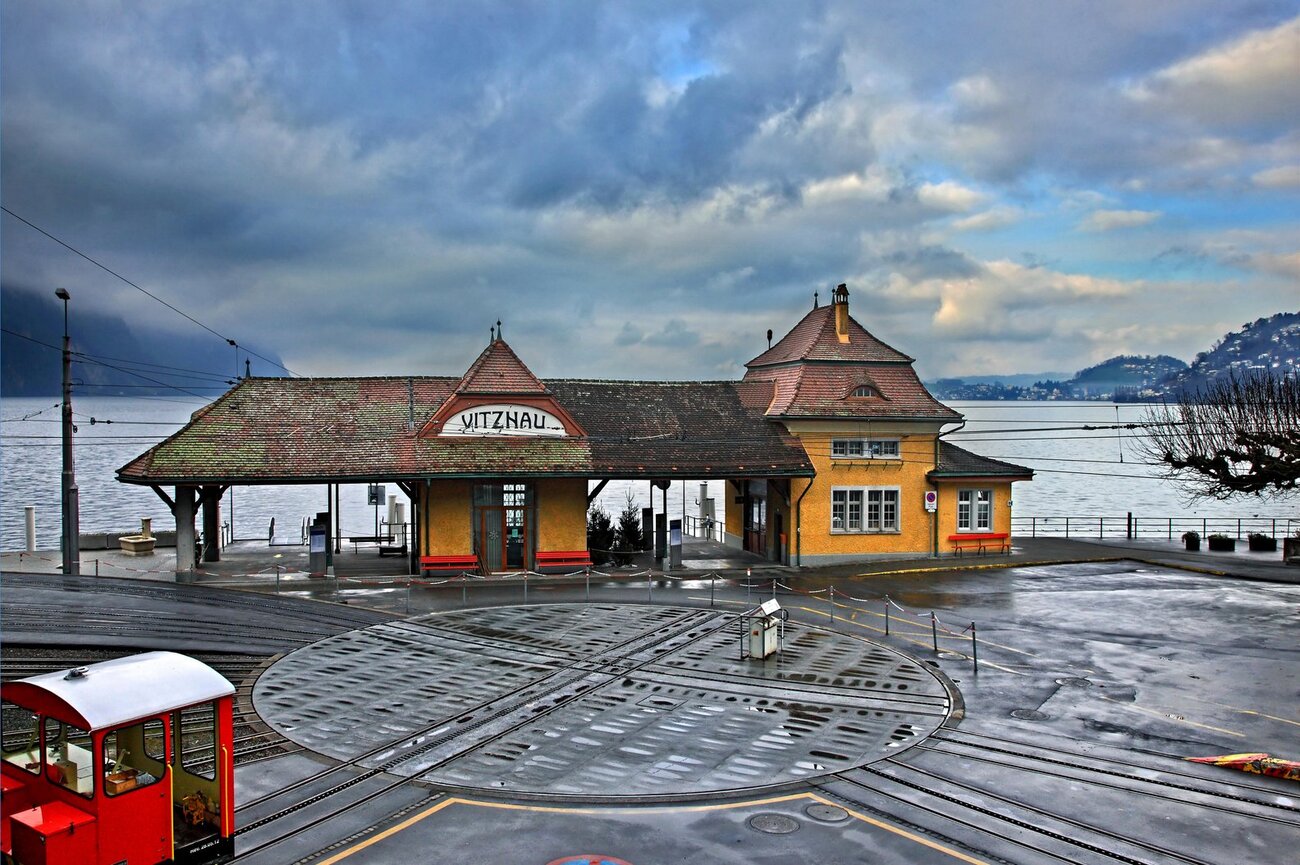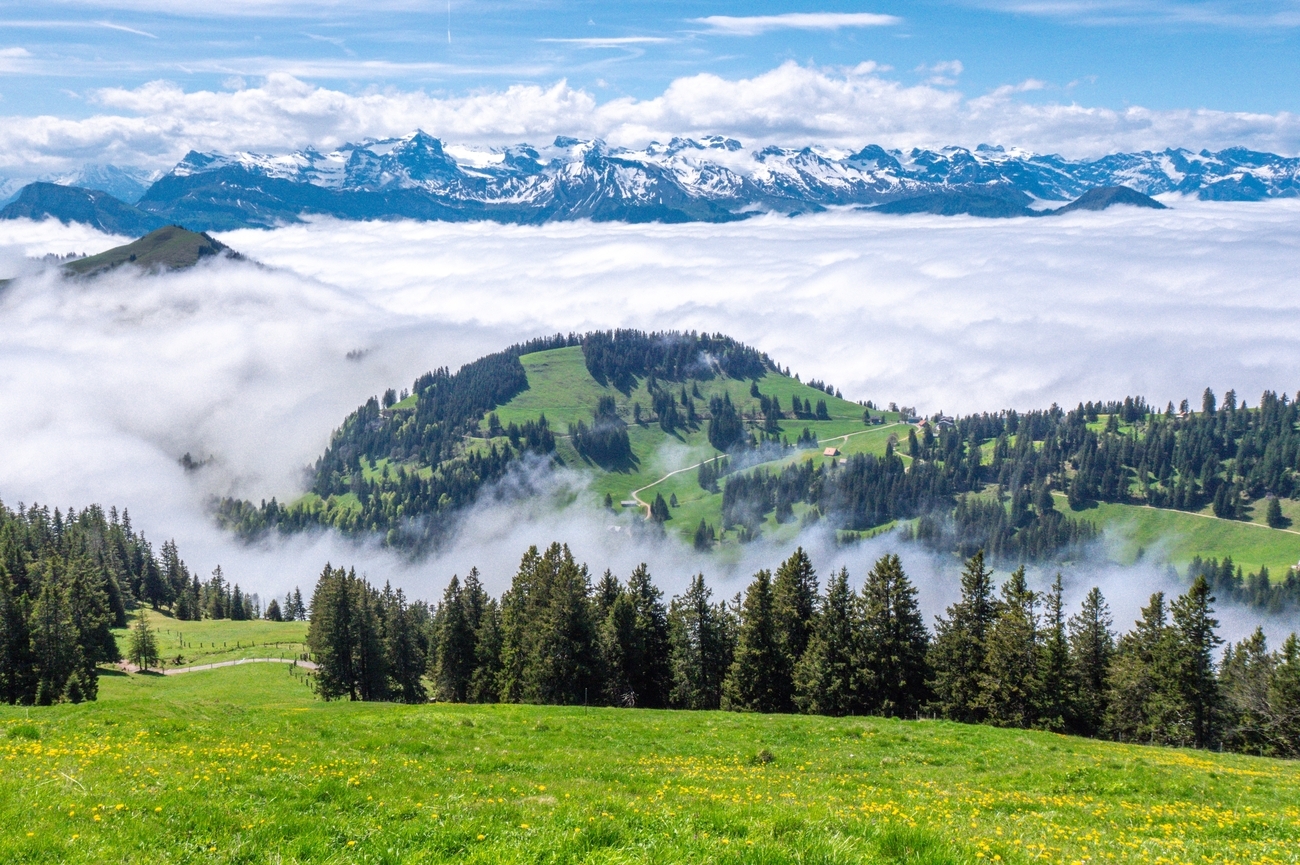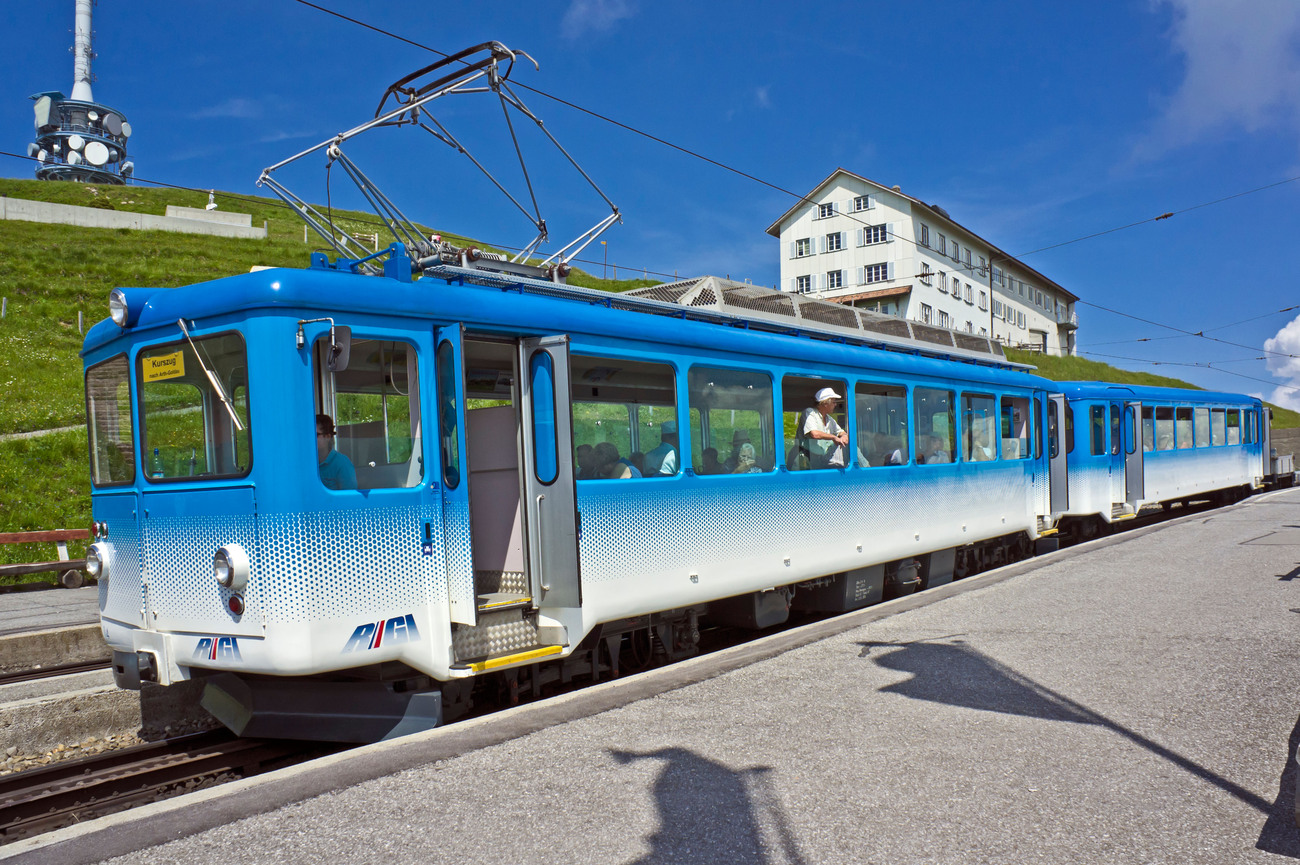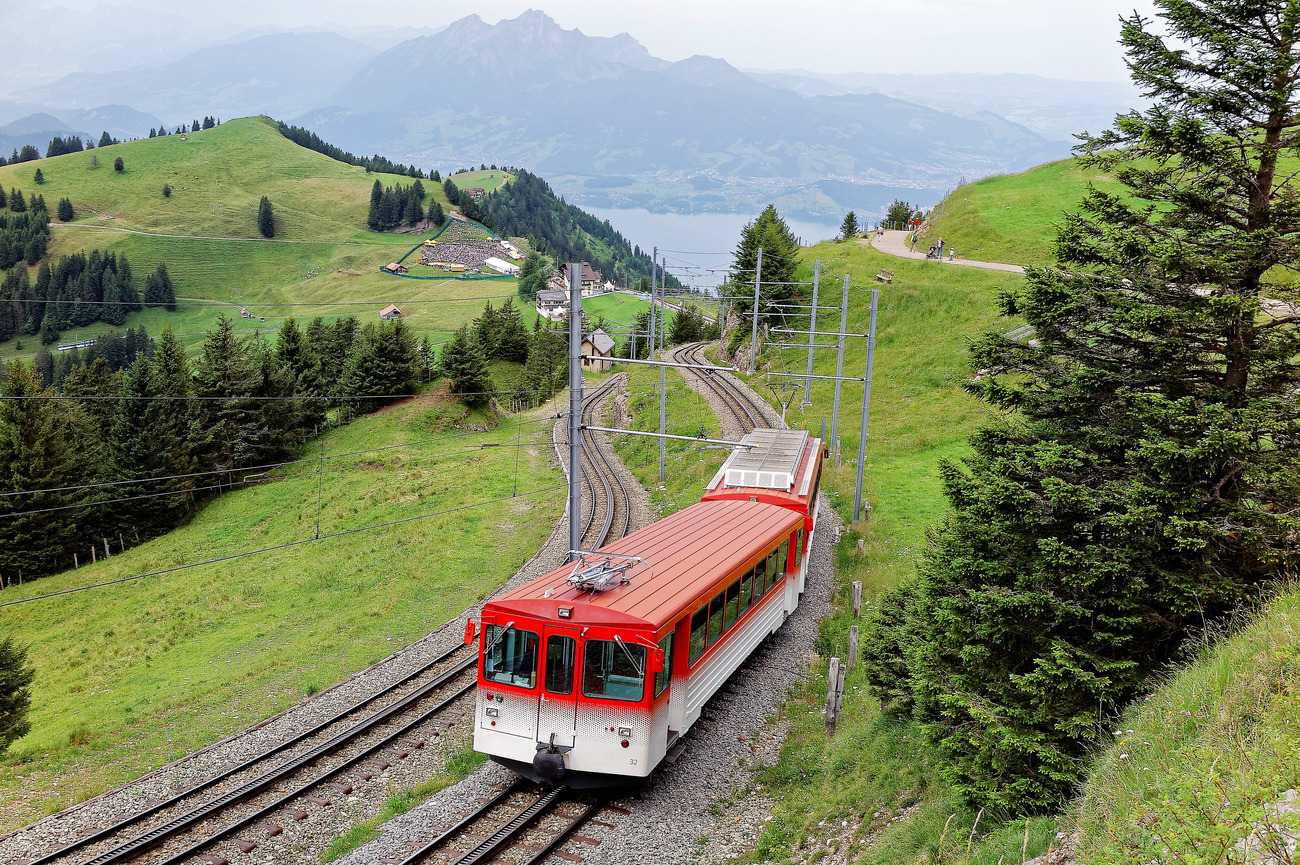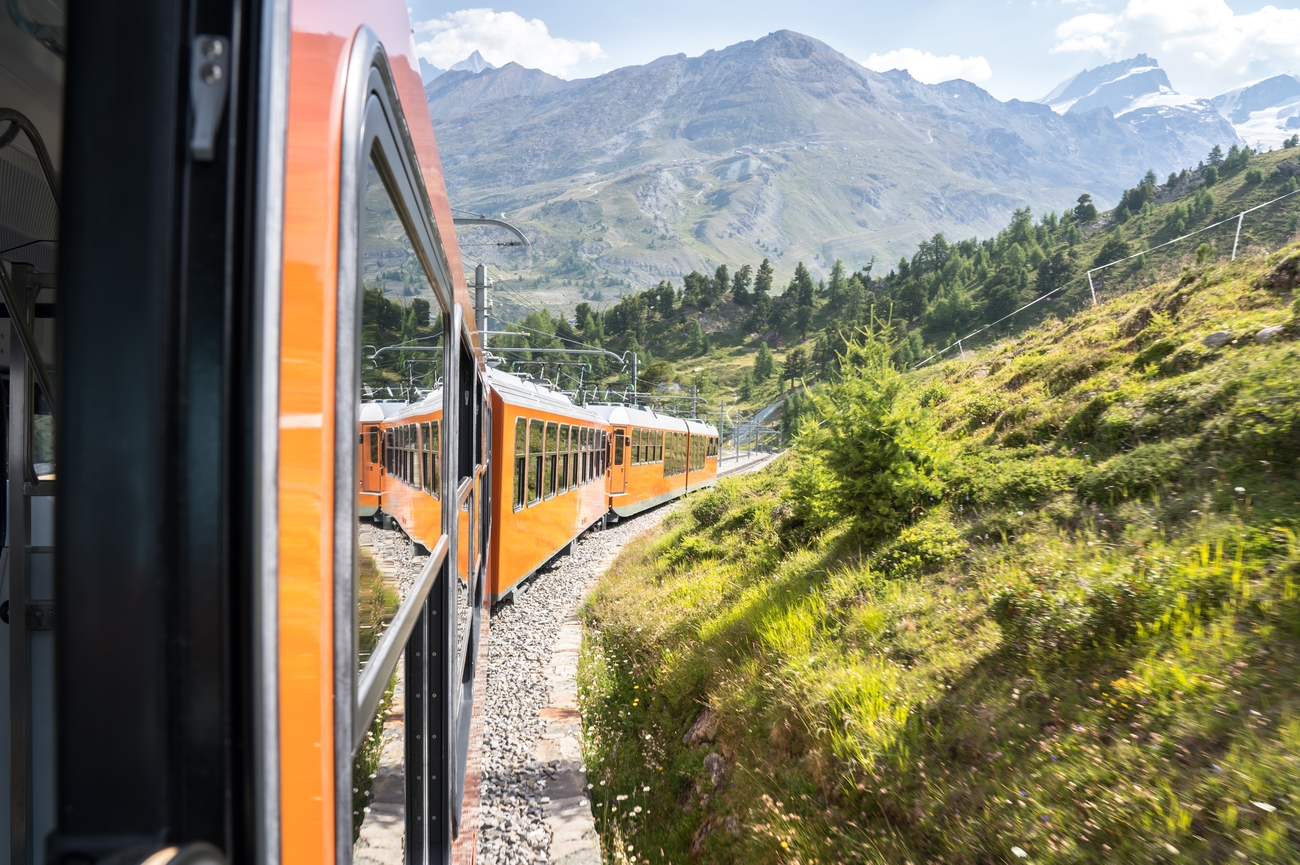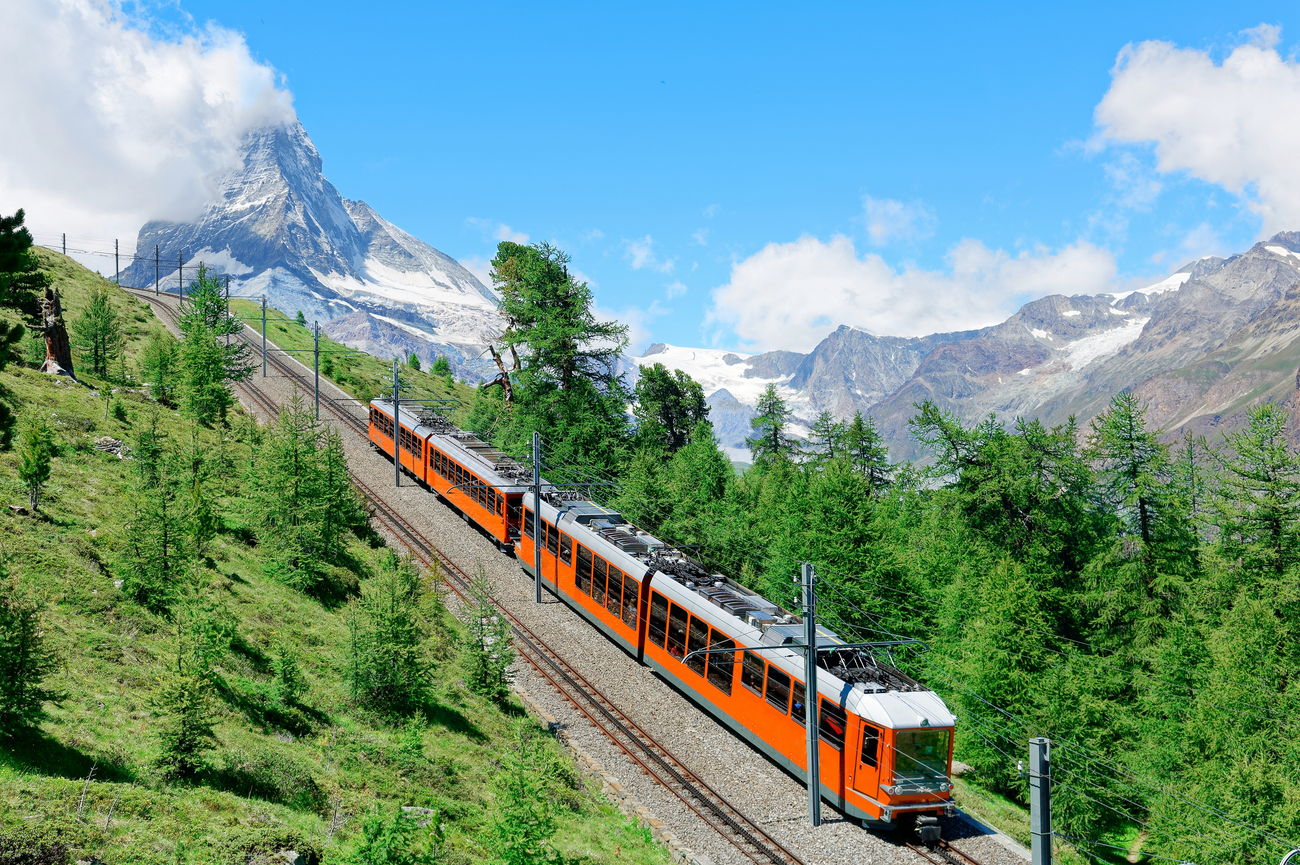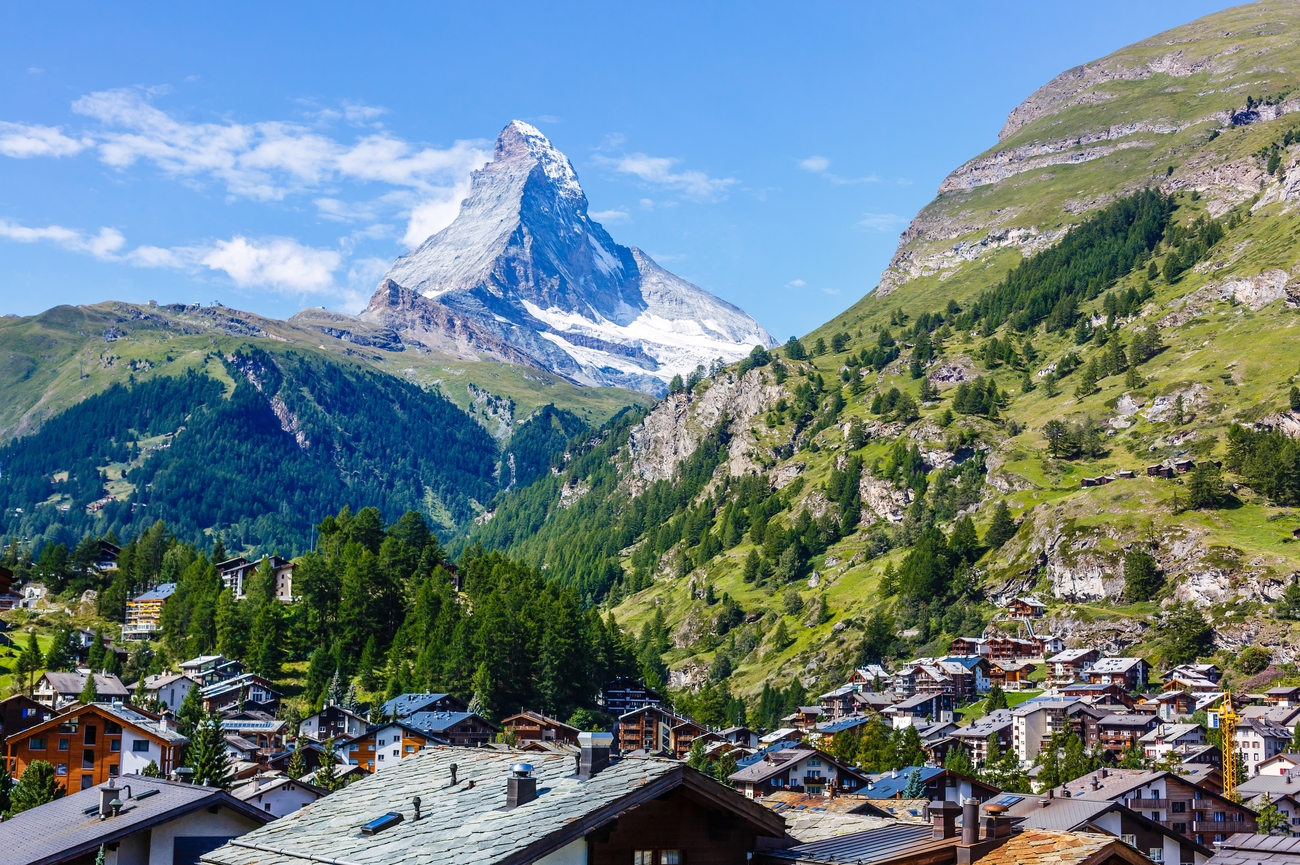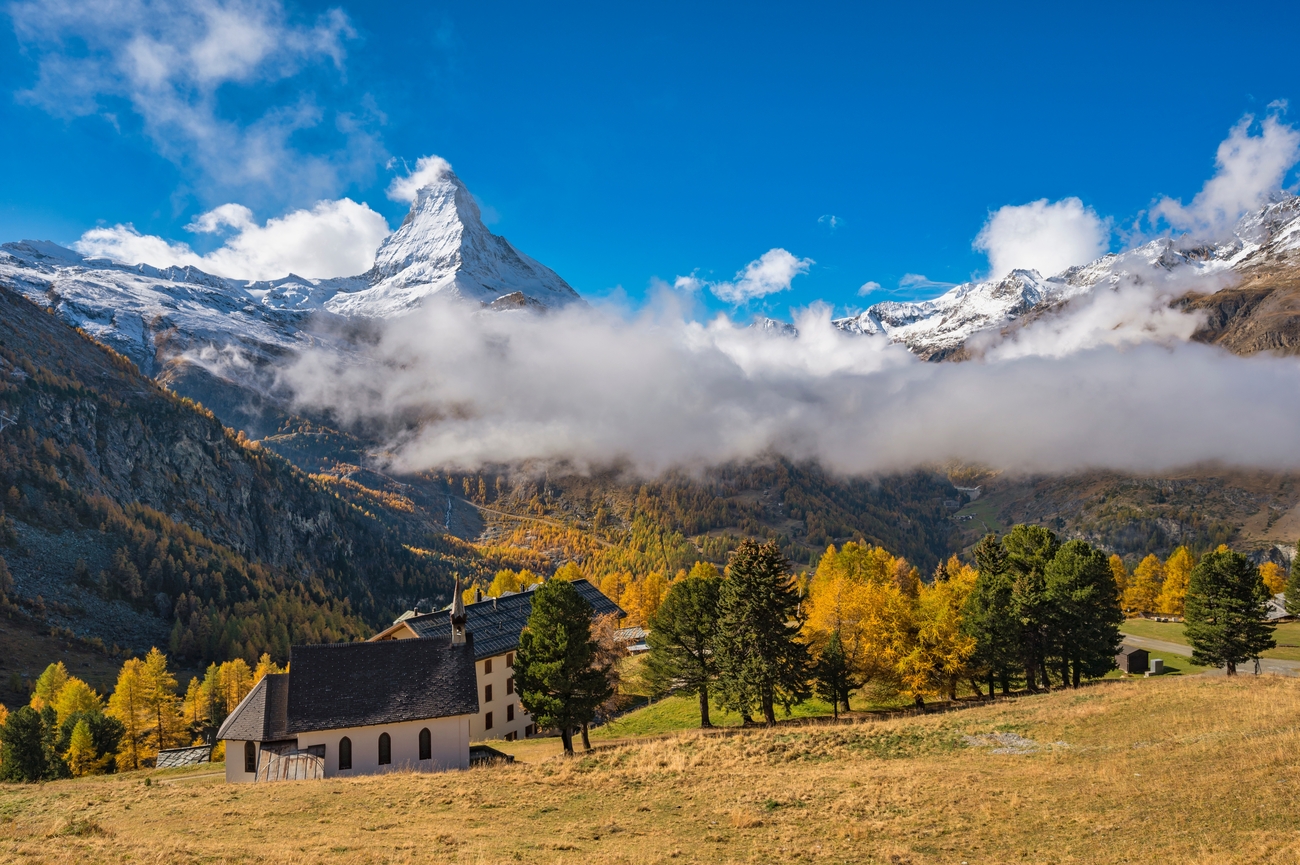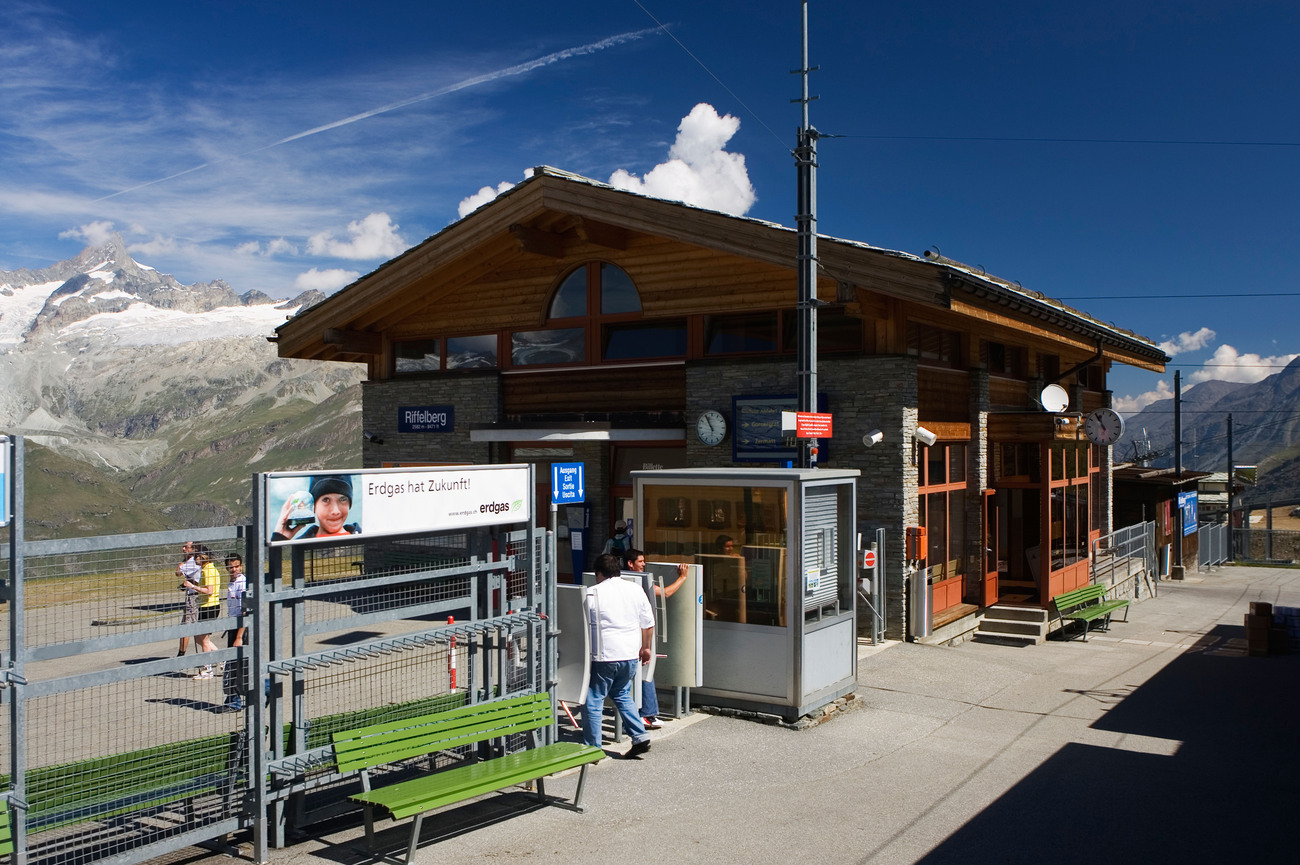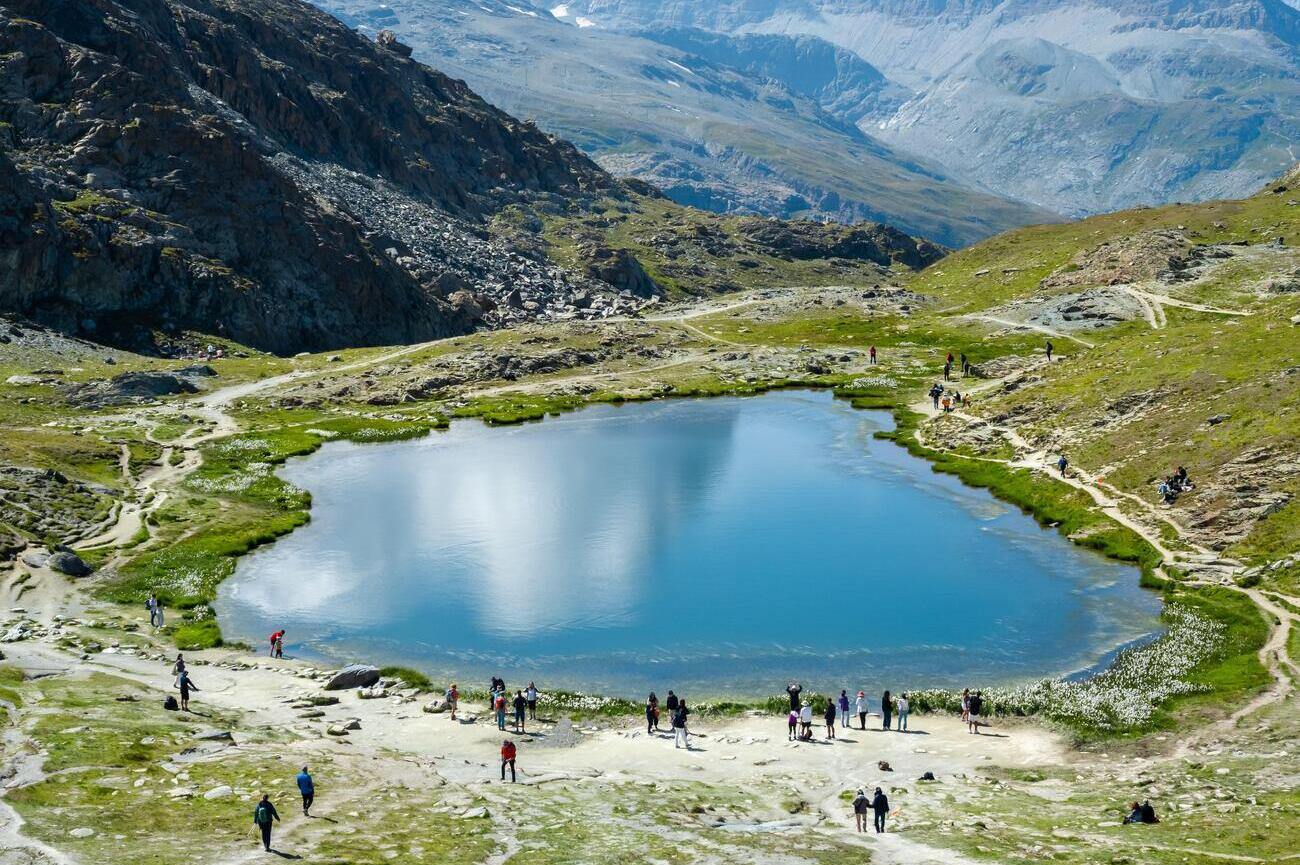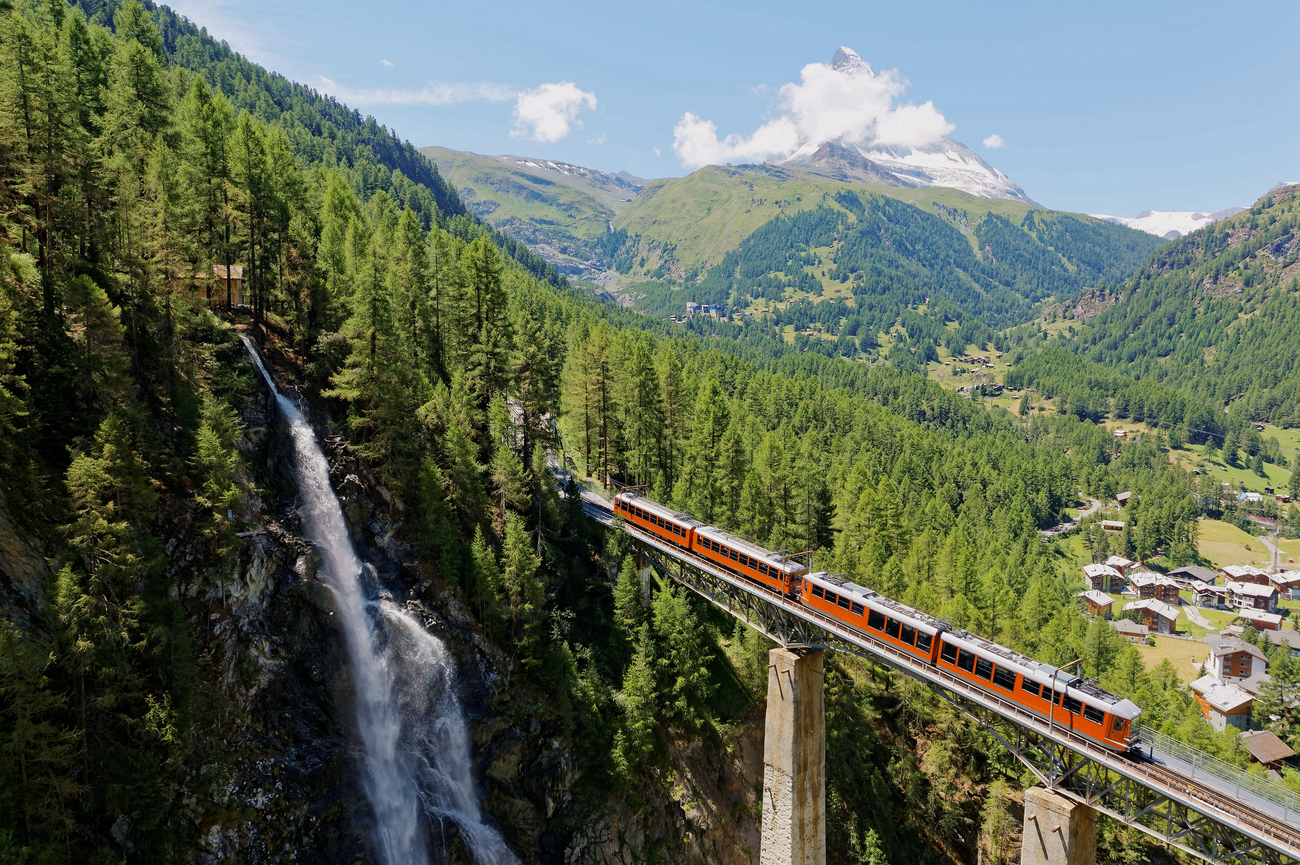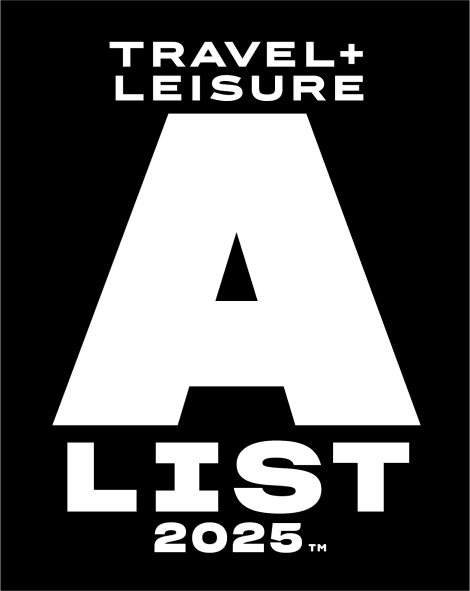Swiss Cogwheel Railways: Pilatus, Rigi & Gornergrat Mountain Trains

Pilatus
Cogwheel Railway
This is the Pilatus Cogwheel Railway, where gravity goes to cry in a corner. This isn’t your average toot-toot on tracks. No, this is the Beyoncé of mountain railways.
Let’s start with the headline: world’s steepest cogwheel railway. Not “pretty steep.” Not “steeper than your morning hike.” The steepest on Earth. We’re talking a maximum gradient of 48%. That’s basically vertical in train language.
The story begins in 1889, when Swiss engineer Eduard Locher looked at the nearly vertical slopes of Pilatus and saw a challenge worth conquering. Most would’ve said, “No way.” Locher said, “Let’s build a train.” But not just any train, one with a revolutionary horizontal cog system designed to grip the mountain like it meant business. The result? A railway that defied expectations, gravity and pretty much every rule in the book.
It was originally powered by steam but the line was electrified in 1937. Up to today, it continues to carry passengers from Alpnachstad up to Pilatus Kulm with grace, charm and a serious side of scenery. It’s a short but unforgettable journey. About 30 minutes up a 4.6 km track, you’ll wind past alpine meadows, jagged rock faces and cloud-kissed panoramas that would make you pause for a selfie.
Pilatus
Cogwheel Railway Route

Alpnachstad to Pilatus Kulm
While other trains might clock in hundreds of kilometers or spend the night gliding through sleepy border towns, the Pilatus Cogwheel Railway takes a different approach. It doesn’t travel far. It doesn’t run overnight. But what it does do is climb. In just under 4.6 kilometers, this mechanical marvel rockets (okay, crawls) from lakeside calm to cloud-level drama.
Alpnachstad
Let the uphill battle begin. At 435 meters, it’s practically lounging at sea level compared to what’s coming. This peaceful lakeside village is the Pilatus Railway’s launching pad. At the foot of the mountain is where the train steps in. Right now, all you need is a seat on the little red train about to take on one very big mountain.
Ämsigen
Midway up the mountain and halfway to the sky, the train passes Ämsigen, once the practical halfway mark for two steam locomotives to pass each other on the single track. At around 1,350 meters, you’re officially above the tree line and well into postcard territory. While modern trains don’t stop here anymore, this former meeting point is surrounded by sheer cliffs, alpine meadows and pine forests that slowly give way to raw rock and open skies.
Pilatus Kulm
Welcome to the top. Pilatus Kulm, sitting proudly at 2,073 meters, is where altitude meets attitude. This summit station is a legend. On a clear day, you’ll spot 73 alpine peaks from the observation decks, not to mention sweeping views of Lake Lucerne far, far below. There’s a hotel, restaurants, hiking trails and plenty of fresh mountain air to clear out city thoughts.
The Golden Round Trip
The Golden Round Trip is no ordinary sightseeing loop. It’s a perfectly orchestrated journey that showcases Switzerland’s finest: lake views, soaring summits, cable cars and Alpine charm all in one seamless adventure. And right at the center of it all is the Pilatus Cogwheel Railway. After a peaceful cruise across Lake Lucerne, the cogwheel ride kicks things into high gear. It’s the most dramatic stretch of the trip, delivering sweeping views and a healthy dose of Swiss engineering pride. From the summit, you’ll descend by gondola and cable car to Kriens, then return to Lucerne by bus.
Rigi Cogwheel Railway
No list of Swiss cogwheel trains is complete without tipping a hat to the one that started it all. The Rigi Cogwheel Railway, opened in 1871, isn’t just historic, it’s iconic. As Europe’s very first mountain railway, it paved the way (or rather, laid the tracks) for all the scenic Alpine climbs that followed.
The train climbs from Vitznau to Rigi Kulm at 1,798 meters above sea level. This legendary line may not claim the steepest incline, but it does offer something just as impressive: timeless views over Lake Lucerne, a gentler, more graceful ascent and a front-row seat to the birthplace of mountain rail travel. Along the way, it passes flower-dotted meadows and grazes cows that look straight out of a milk commercial. The route is short and sweet, about 30 minutes, but packed with enough Alpine views.
Rigi Cogwheel Railway Route

Vitznau to Rigi Kulm
The Rigi Cogwheel Railway holds the ultimate bragging right: it was first. This 19th-century trailblazer kicked off Europe’s obsession with climbing mountains by train. The ride from Vitznau to Rigi Kulm spans just under 7 kilometers, but make no mistake, it’s not about distance. It’s about legacy and lakes.
Vitznau
Starting things off at 439 meters, Vitznau is basically the red carpet to Mt. Rigi. Lakeside, laid-back and very into being photogenic, it’s where train meets mountain with a firm (and stylish) handshake. This is where Niklaus Riggenbach’s brilliant cogwheel system first clinked into motion, back when the idea of riding a train up a mountain sounded like a plot twist. Today, vintage trains still depart from here with all the charm and none of the drama.
Rigi Staffelhöhe
No need for sharp turns or adrenaline-jolting gradients here. Trains glide by Staffelhöhe, Kaltbad, and a few blink-and-you-miss-them halts, with windows serving up Lake Lucerne on one side and the Swiss Alps doing their thing on the other. The ride is equal parts nature documentary and vintage luxury.
Rigi Kulm
Top of the ride, and top of the world. Rigi Kulm sits proudly at 1,798 meters, with views that should come with a standing ovation. On a good day (and most of them are), you’ll spot 13 lakes, the Bernese Alps, maybe even the Black Forest waving hello from Germany. This is the kind of place where time slows down, jackets come off and even the clouds hang around just to admire the view.
The Royal Round Trip
The Royal Round Trip starts the the majestic Rigi Cogwheel Railway and is supported by a loyal cast of ferries, cable cars and yes, buses that know how to make a scenic exit.
Let’s break it down. You start in Lucerne, where lake meets legend. From there, it’s all aboard a Lake Lucerne steamboat to Vitznau, where the Rigi Cogwheel Railway steps in like the queen of uphill travel that she is. And once you’re done enjoying the views from Rigi Kulm, it’s time to descend. Enter the cable car to Weggis, a gentle glide back down the mountain that feels like being lowered from cloud nine. And then? The grand finale: the bus ride back to Lucerne.
Gornergrat Cogwheel Railway
You know a railway means business when it climbs to 3,089 meters and doesn’t even break a sweat. Gornergrat Bahn is Switzerland’s highest open-air cogwheel railway and arguably the most dramatic performer in the Swiss Alps.
This train has been running since 1898 and it’s a showcase of extremes. It was the first fully electrified cogwheel railway in the world and it still runs on hydropower like a true eco-icon. The journey begins in Zermatt, where combustion engines are banned and the air smells like pine trees and ambition. From there, the train climbs steadily for about 33 minutes.
But the real headliner? The Matterhorn, standing tall like it’s been hired as the Gornergrat’s personal backdrop. At the summit station, you’re greeted by a sweeping panorama of 29 peaks over 4,000 meters, including the Monte Rosa massif, the Dufourspitze (Switzerland’s highest point) and a view so crisp it feels filtered.
Gornergrat Cogwheel Railway Itinerary

Zermatt to Gornergrat
If Swiss railways were on Instagram, the Gornergrat Bahn would be the influencer. This train is always elevated, effortlessly photogenic and permanently backdropped by the Matterhorn. At a maximum elevation of 3,089 meters, this open-air cogwheel railway is the highest in Europe and honestly? It knows it.
Zermatt
Welcome to Zermatt, where cars are banned, the air is clean enough to bottle and the Matterhorn photobombs everything. At 1,604 meters, this chic mountain village is your launchpad. The station is sleek, the train is electric (literally and energetically) and your ride to the top begins.
Riffelalp
As you climb, the train slides into Riffelalp, where meadows meet majesty. The luxury Riffelalp Resort is here, with its own tiny private tram line. Because why walk when you can glamp in style? At this altitude, the air’s thinner, the views wider and the train is just warming up. Also, the cows? They moo in Swiss German.
Riffelberg
Now we’re really cooking. Riffelberg is the point where trees tap out and the rocks take over. From here, the Matterhorn goes from “distant icon” to “over-the-shoulder travel buddy.” There’s a restaurant, a few hiking routes and a moment where you’ll realize your phone can’t quite do this view justice.
Rotenboden
Hold onto your camera roll. At Rotenboden, you’ll want to hop off for a detour to Riffelsee, a little alpine lake famous for reflecting the Matterhorn like a mountain-sized vanity mirror. It’s only a short walk, but this spot has earned a cult following among photographers and romantics alike.
Gornergrat
And now, the summit. Gornergrat is where the altitude slaps and the scenery stuns. You’ve made it to one of the best panoramic platforms in the Alps, overlooking the Gorner Glacier and 29 peaks above 4,000 meters, including Dufourspitze, Switzerland’s highest point.
Your Passage Begins Here
The Swiss Cogwheel Railway isn’t just a means of getting from valley to summit—it’s an ascent into another world. Each turn of the gear track lifts you higher, not only into the Alps but also into a different rhythm of life. What lingers after the ride isn’t a checklist of peaks or stations, but the memory of crisp mountain air, the quiet strength of the landscape, and the sense of wonder shared with fellow travellers.
If you’re ready to journey not just through Switzerland, but into its heart, this is where it begins. Contact us or call (+1 800 672 0517 | +351 289 009 580 | +44 808 189 0647) and let Revigorate craft your perfect Swiss escape.
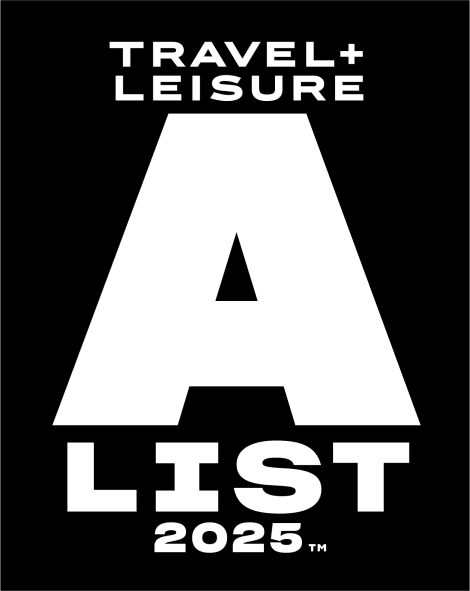

Let us know what you love, where you want to go, and we’ll design a one-of-a-kind adventure you’ll never forget.
Get in touch
Miriam
Europe & Africa Expert

Romina
Europe & Africa Expert

Catiane
Europe & Africa Expert
Our offices:
